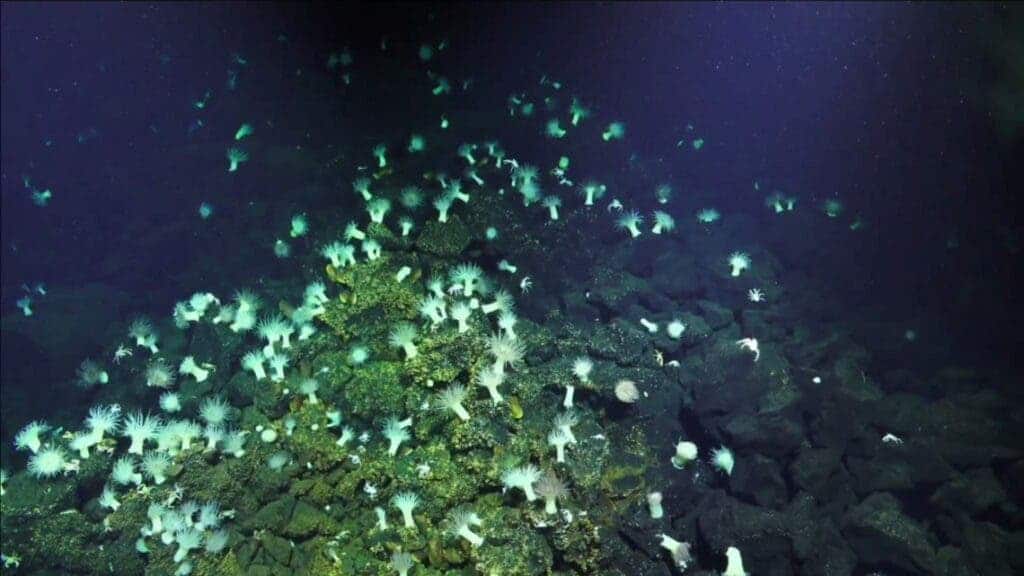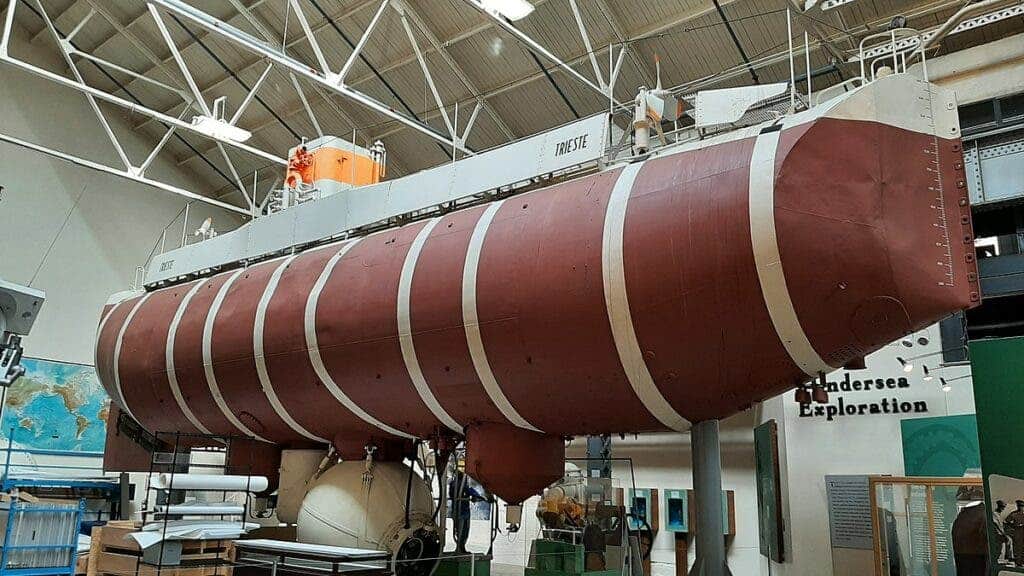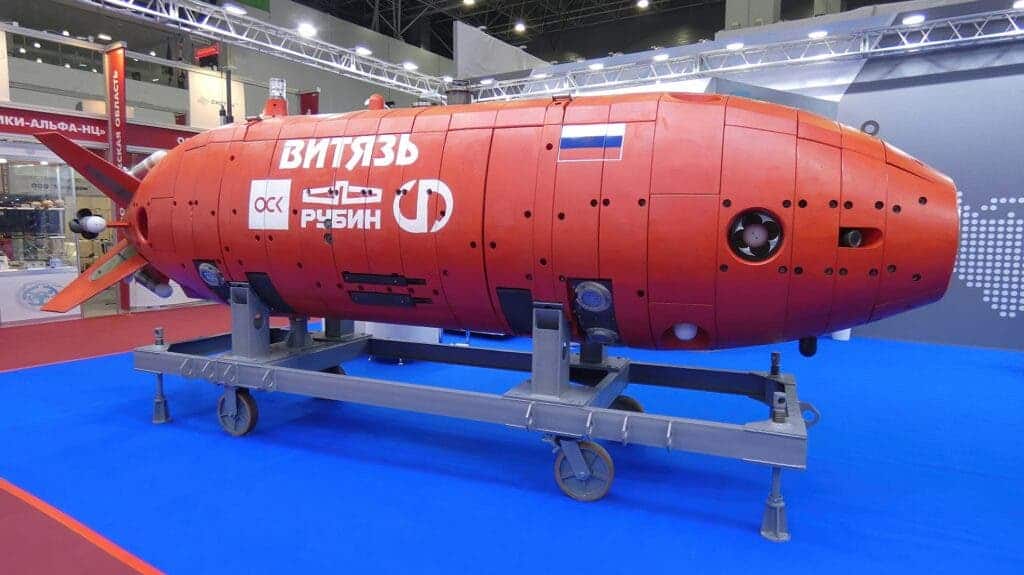No sunlight has ever shone here. Temperatures vary wildly, seas of freezing cold punctured by isles of boiling-hot water around volcanic vents. And the pressure — it would be enough to flatten you like an empty soda can under a bus. We’re not talking about some hellish planet barreling through the universe somewhere. This place is right here with us, on Earth; this is the Mariana Trench.
The Mariana Trench is an oceanic trench located between Japan and the island of New Guinea. It is the deepest trench in the world and the single lowest-altitude point on the planet. Measuring 11,034 meters (36,201 feet) below the water at its lowest point, the Mariana Trench is so deep that, if we were to place Mount Everest at this point, the mountain’s peak would still be submerged under 2km of water.

Because of the depth of this submerged geography, the pressure here is immense. So far, only 13 people have made the journey to the Challenger Deep, the deepest known point of the trench, and only two of them have made the journey more than once. The journey down takes around 4 hours to complete, and can only be made in submersibles with hardened steel or titanium hulls measuring 64 mm (2.5 in) in thickness.
So far, no human being has ever been able to set foot on the bottom of the trench. This means that more people have walked on the surface of the Moon than in the trench.
How did the Mariana Trench form?
The Earth is covered in a shell of hardened rock known as its crust. Some areas of this crust are thicker, known as ‘continental crust’, and forms our planet’s dry land. The oceans lay in the areas of our planet covered in the thinner ‘oceanic crust’, as water wants to flow down towards lower elevations.
Despite being covered in a layer of quite solid rock, the Earth is a planet alive. And, just like our skin grows old and is replenished, Earth’s skin is in continuous motion, being formed, growing old, and finally, being recycled as part of a continuous cycle. This process is powered by crust being absorbed back into the Earth’s molten mantle in subduction zones, where tectonic plates converge and push under each other, while the new crust is created in rift areas, where tectonic plates move apart from one another.
The Mariana Trench is formed on one such subduction zone, where the Earth’s crust pushes deep into the planet’s bowels. It reaches some 11,034 meters (36,201 feet) below the surface of the ocean.

From a geological standpoint, the Mariana Trench forms part of the eastern boundary between the teeny-tiny Mariana (tectonic) Plate and the Pacific Plate. The Mariana Trench is formed by the Pacific plate pushing towards and underneath the Mariana micro-plate. On the surface, volcanic activity caused by melting material from the Pacific Plate has created the Mariana Islands, which gave the whole area its name.
We don’t know for sure how old this subduction process is. What we do know is that volcanic activity in the area has been ongoing for at least 50 million years; this tells us that the Trench is at least as old, but likely older, as subduction had to start before any volcanic activity it generated on the surface.
Who discovered the Mariana Trench?
The Mariana Trench is, to date, one of the least explored places on Earth.
It was first discovered in 1951 by the British Survey ship Challenger II, which also marked Challenger Deep which, at a depth of almost 11,000 meters (35,800 ft), was the lowest-known point at the time (and remained so for quite a few decades).
No major exploration effort visited the depth of the site for almost one decade after its discovery. This mostly came down to technological limitations: there simply were no vehicles around that could go deep enough to explore the Trench. Even then, at the height of the cold war, the most capable submarines of the time, military submarines, were made to operate at depths of around 400m (1,300 ft), give or take. Although they could go deeper than that, they were not capable of withstanding the mammoth pressures at the bottom of the Mariana Trench.
This pressure, measured by modern vehicles, reaches in excess of 1,160 kgs of force per square centimeter (16,500 pounds per square inch). This is over 1,000 times more pressure than we experience here on the surface.
The first vehicle to explore the trench was a submersible named Trieste, manned by the famous Swiss oceanographer Jacques Piccard and American oceanographer Don Walsh. The journey towards the depths of the Mariana Trench started on 23 January 1960.

It took the two explorers more than five hours inside the cramped bathyscaphe to make the descent. Trieste was designed as a dual-walled sphere of metal, with a thick outer wall and a thinner pressure sphere that housed the crew. The layer between the two was filled with petrol for buoyancy. It was very much a proof-of-concept vehicle carrying no scientific equipment besides two observation ports and electric light.
This trip was largely uneventful but at around 30,000 ft (9,140m), the duo heard a loud bang or cracking noise. One of the outer Plexiglas window panes had cracked from the immense pressure, sending shockwaves throughout the walls of the submersible. Likely unnerved, but undaunted, the two pressed on, finally settling on the seafloor in “snuff-colored ooze” at 35,800 feet.
At this depth, it took seven seconds for a message to travel from Trieste up to its support ship via a hydrophone, and another seven seconds for its reply to be relayed back.
Despite the limited possibilities of the bathyscaphe, the two researchers reported seeing a new type of shrimp, and a number of sole and flounder flatfish, findings which would be heavily disputed after their publication, and are still not recognized as valid. It is possible that the duo mistook invertebrates such as sea cucumbers for flatfish due to their limited view and knowledge of biology.
Still, Piccard chose to quickly ascend after spending only 20 minutes on the seafloor after discovering a series of cracks in the vehicle’s viewing windows.
The trip back up took three hours and 15 minutes.
Despite the success of this mission, and its popularization around the world through Piccard’s written account Seven Miles Down, its planned return did not occur. Trieste was a proof-of-concept, and quite expensive to maintain. It was also very limited in its abilities — it couldn’t collect samples, and it was virtually impossible for its crew to take useful photographs of the world outside it. Although maintenance and development continued for some time, eventually, Trieste’s high cost and low return meant that it was taken out of service in 1966. It was taken to the Washington Navy Yard where she remains on exhibit today, as part of the National Museum of the U.S. Navy.
Later revisits
Piccard and Walsh’s voyage would, for the next few decades, remain the only time humanity had taken a peek at the depths of the Mariana Trench. By the time we returned, robots would take the front seat in exploring these crushing depths.
The next few exploratory missions in the area were carried out by remotely-operated vehicles (ROVs). These were two Japanese missions using the ROV Kaikō in 1996 and 1998, and the robotic deep-sea probe ABISMO in 2008. Then it was the US’s turn to visit the Trench with their Nereus in 2009, followed by the Chinese Haidou-1 in 2016 and the Russian Vityaz-D in 2020. The last mission marked the first time a fully-autonomous robot reached the depths of the Mariana Trench.
Although robots took a leading role in diving into the Trench during this time, a few people did also make the journey. The first person to make the dive after Piccard and Walsh was James Cameron, a Canadian film director, who made a solo descent in the Deepsea Challenger in 2012.

After him, American investor Victor Vescovo braved the depths. He dived four times between 28 April and 5 May 2019 as part of the Five Deeps Expedition, which aimed to visit and map the deepest points of all five of the world’s oceans. With this mission, Vescovo became the first person to ever reach the Challenger Deep more than once. He would return in 2020, making a further five trips between the 12th and 26th of June.
In 2020, a Chinese manned vessel, Fendouzhe, carried out thirteen dives in the Mariana Trench as part of a test program between 10 October and 28 November. Thanks to improvements in materials science, Fendouzhe could house several crewmen as well as sensory equipment. Ye Cong, the chief designer of the submersible, said at the time that China’s goal with the mission wasn’t just scientific investigation, but also to move towards deep-sea seabed resource exploration.
The last manned mission to the trench occurred in February 2021, with the Ring of Fire 2 Expedition. After an unmanned dive, Victor Vescovo and American entrepreneur, video game developer, and private astronaut Richard Garriott made the descent as well. Garriot thus became the 17th and latest human being to dive to the depths of the Mariana Trench.
Do any animals live in the Mariana Trench?
While the complete absence of sunlight makes the bottom of the Mariana Trench quite inhospitable to life, it is the immense pressure that makes it lethal. The sheer depth this trench reaches means that any object or being on its bottom will be flattened by a column of water, continuously experiencing pressures of up to 8 tons per square inch (1.24 tons per sq centimeter).
At this pressure, any empty space inside your body would collapse inward with almost explosive force. Our bones, too, wouldn’t stand a chance, and would shatter instantly if exposed to such pressures.
And yet, life finds a way. While we do have precious little data regarding the life at the bottom of the Mariana Trench, there are around 200 species known to date that survive in the waters at its bottom. Most of them are microorganisms such as bacteria or very small animals such as crustaceans and amphipods. Larger inhabitants include sea cucumbers, octopus, and fish.
So what kind of animals are they? Judging from what we know of other deep-water environments, virtually all animals living here have undergone dramatic adaptations to be able to survive. Species here rely on cartilage instead of bone for their skeletons, as the pressure is too high for calcium carbonate — the main mineral in our skeleton — to remain stable, and it dissolves. Fish have also done away with the air sacks their cousins closer to the surface use for buoyancy, explains Dr. Ram Karan, a former NASA associate currently researching extremophiles at the King Abdullah University of Science and Technology in Saudi Arabia for the Times of India. Other adaptations include several backups of genes important in the production of specialized proteins that can function in these immense pressures, and lipid coatings around cells to prevent damage from the cold environments.
To make up for the lack of light, animals either evolve extremely sensitive eyes or do away with sight altogether. Bacteria have given up photosynthesis and instead rely on chemical synthesis for energy, drawing sustenance from the scalding matter released by magma vents. Fish carcasses or other organic material sinking from the surface, such as wood, provide occasional feasts on the seafloor.
The Mariana Trench is such a different environment from the ones we live in, and hostile to such an extreme, that it might as well be an alien world. Its existence goes to show that the Earth can sometimes be a very harsh home — and yet, despite it, life pushes on to carve a place for itself.
While humanity steps ever farther into space, the Mariana Trench should serve as a humble reminder not just of our technological limitations, but also of how far our perseverance and curiosity can take us, and how deep.


